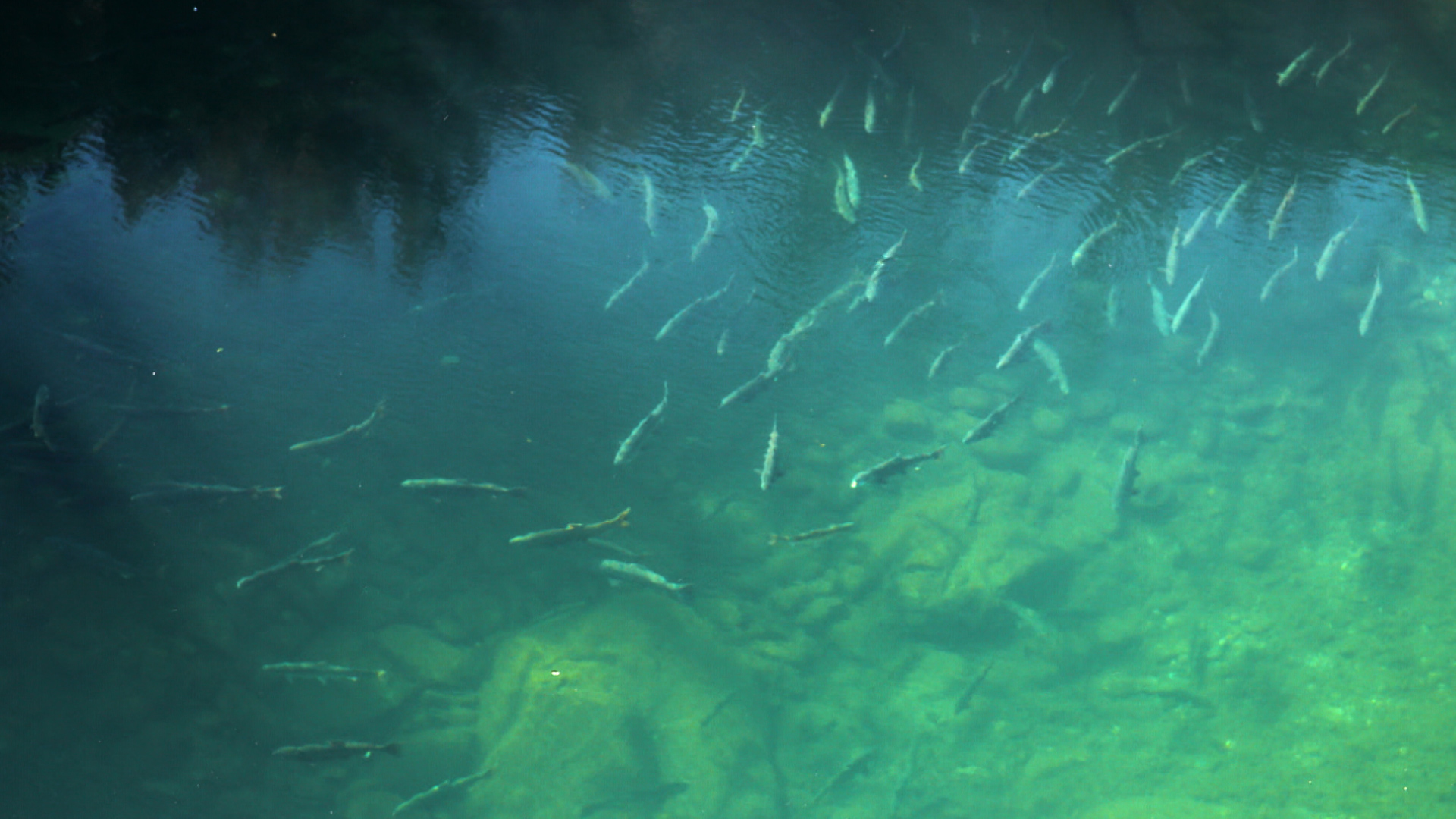A very low return of spring Chinook salmon in the South Umpqua River has conservationists alarmed. Several groups now want the fish given federal protection.

Fall Chinook salmon swim upstream near the confluence of the Klamath River and the Scott River tributary on Oct. 13, 2022.
Brandon Swanson / OPB
Snorkel surveys by the Oregon Department of Fish & Wildlife, also known as ODFW, show only 17 adult Chinook coming back to the South Umpqua River.
The Center for Biological Diversity’s freshwater attorney, Meg Townsend, told KLCC that’s just 12% of the 10-year average. She said her group, the Native Fish Society, and Umpqua Watersheds have all petitioned the National Marine Fisheries Service to have spring Chinook listed under the Endangered Species Act.
In a joint release issued by the groups, a public records request led to the disclosure of the ODFW’s latest survey.
“Historical records indicate that spring Chinook lived in numerous watersheds of the Oregon and Northern California coastal range, but the once-abundant spring Chinook runs in the Siuslaw, Coquille and many other coastal rivers in Oregon are now entirely gone,” stated the release.
“Our goal here is not to stop fishing for these fish,” said Townsend. “We really want to make sure that any action taken in our coastal watersheds is done in such as way as not to further harm spring Chinook.”
Conservation groups have said dam development, traffic, climate change and logging have all disrupted habitat and activity for salmonids. Chinook salmon are anadromous, meaning they return from the ocean to the freshwater streams where they were born to reproduce. The Oregon and California Chinook salmon populations contain both early and late-run variants, otherwise known as spring-run and fall-run Chinook salmon.
Townsend said low numbers of Chinook also hurt the southern resident orcas, which largely subsist on the fish.
The National Marine Fisheries Service is expected to make a decision by year’s end.
Update: The ODFW response
In an email to KLCC, Michelle Dennehy of the ODFW confirmed the count of 17, and said it marked the lowest number of wild adult Chinook salmon on record.
“Note that the majority of this year’s returning wild spring Chinook were most likely spawned from those that returned in 2018, which is the next lowest run observed (24 wild adults observed in 2018)” added Dennehy.
ODFW conducts snorkel surveys in the summer, while USFS employees do scuba dive surveys in deeper pools to count the spring Chinook. “We survey approximately 90% of the available habitat and then expand out from there,” Dennehy said. “Please note that the 2023 count have not been expanded, however this would not result in a significant increase.
“Last year we observed 160. While still below average, this is an increase and the highest observed in the last 5 years.”
Dennehy said that the South Umpqua spring Chinook run has always been a small population, averaging around 240 fish. She said factors affecting this population are ocean conditions and climate change (warmer temperatures). Conservation agencies are doing active habitat restoration in USFS areas where the fish reside and spawn.
“Other runs of spring and fall Chinook are also below average this year, though not showing such a dramatic decline,” continued Dennehy. She said spring Chinook in the South Umpqua have been identified as a concern for almost a decade, and are a focus for the Coastal Multi-Species Conservation and Management Plan, along with steelhead, chum salmon, and cutthroat trout.
“Although this and recent downturns for other species in the Umpqua are very concerning, federal ESA protections happen at a much broader geographic scale, across life history types (i.e., spring and fall Chinook together), and account for periodic downturns,” Dennehy said. “Given this, ODFW’s position is that it is premature at this time to assert that Coastal Chinook require such far-reaching federal protections.”


